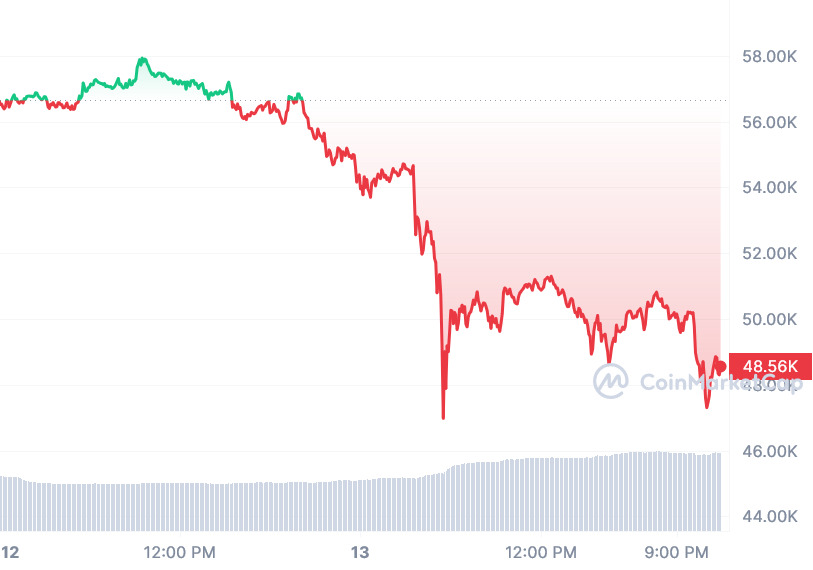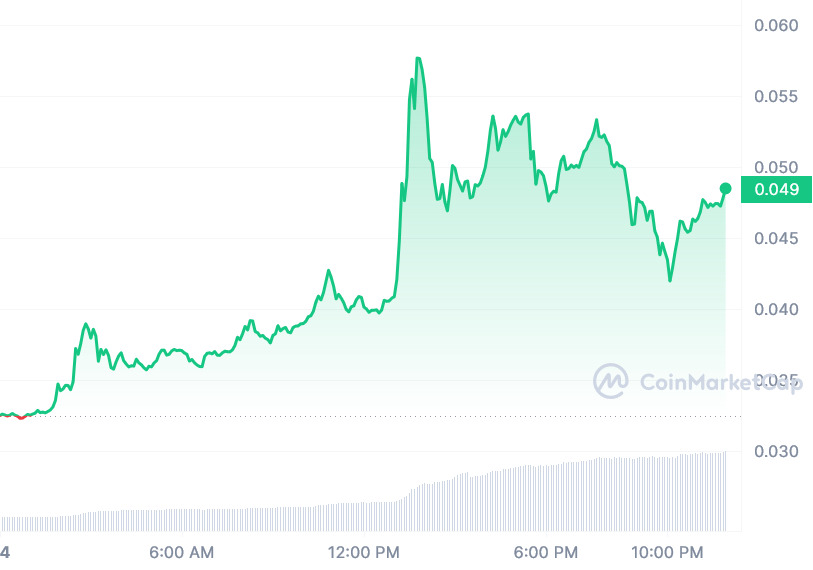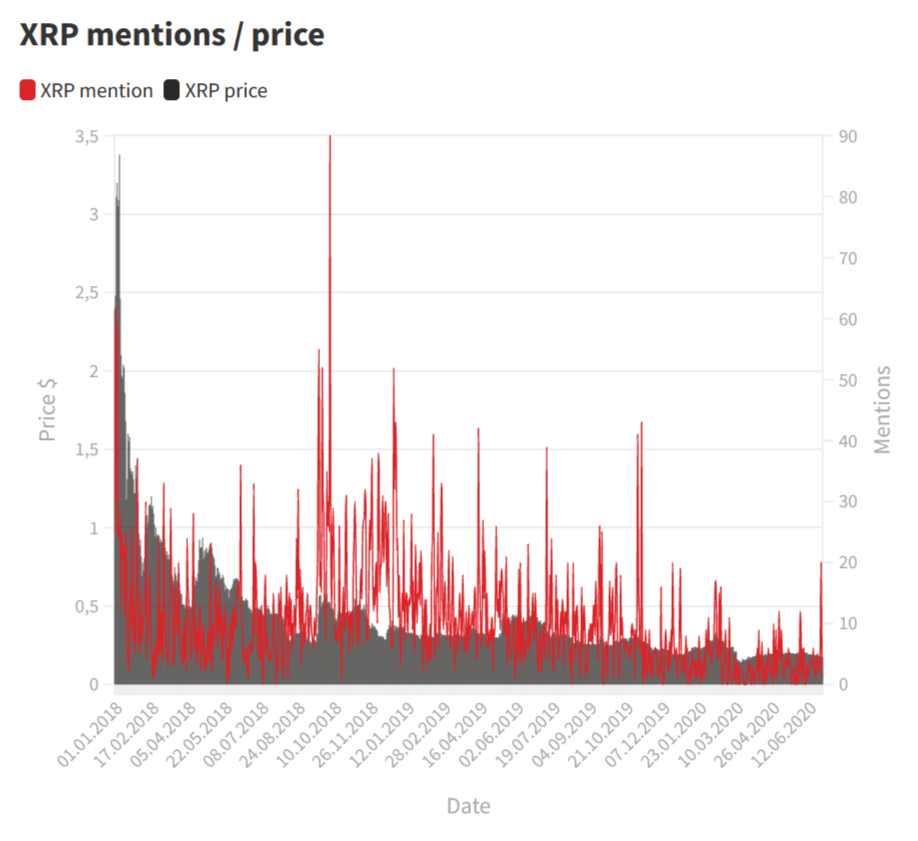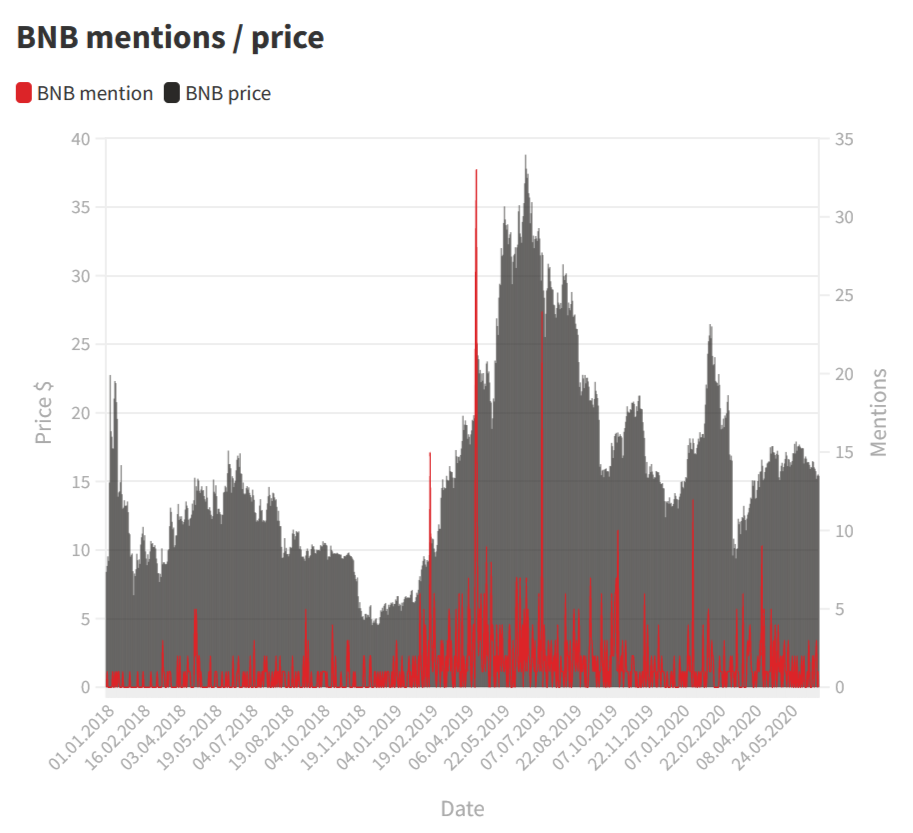How does X (Twitter) impact Bitcoin price? We dive into the science behind the link between Twitter activity and crypto market movements to uncover the facts.
Cryptocurrencies can quickly change in price, a characteristic that has both attracted and deterred investors over the years. Twitter and other social media play a significant role in shaping what people think about cryptocurrencies and influencing crypto market trends. Often, tweets from influential figures—industry leaders, tech visionaries, or financial moguls—hold the potential to either bolster or dampen the spirits of crypto investors. The ripple effect of these tweets can sometimes be observed in real time, with significant price shifts following closely on the heels of a notable tweet.
Scientists have researched this phenomenon over the years, searching for data-backed insights into the correlation between Twitter activity and crypto market reactions and explaining how the mechanisms work. Let’s navigate focal highlights illustrating the intricate dance between Twitter discussions and crypto market fluctuations.
How Elon Musk tweets affected crypto
On Jan. 29, 2021, the world witnessed a staggering surge in the price of Dogecoin (DOGE), a cryptocurrency initially introduced as a joke but which has since garnered a substantial following. This surge was notably triggered by tweets from Elon Musk.
To understand the gravity of this event, let us look at the numbers: Before the tweet, Dogecoin was trading at approximately $0.02. However, within a few hours following the tweet, it skyrocketed to nearly $0.08. This represents a substantial increase of over 300%.
A few months later, on May 13, 2021, the crypto community was in for another roller-coaster, once again initiated by Musk’s tweet.
This time, the focal point was Bitcoin (BTC), the flagship cryptocurrency. Musk announced that Tesla would no longer accept Bitcoin as a payment method for its vehicles, citing environmental concerns. This unexpected announcement had immediate repercussions on Bitcoin’s price.
To gauge the extent of this impact, we look at the data: Bitcoin was trading at about $58,000 levels on May 12. Following Musk’s announcement on May 13, it experienced a decline, reaching lows of $47,000. This signifies a substantial decrease of approximately 19% within a single day.

El Salvador’s presidential influence on Bitcoin
September 7, 2021, marked a historic milestone in the world of cryptocurrencies as El Salvador prepared to officially adopt Bitcoin as legal tender, a move that promised to exist alongside the existing U.S. dollar mechanism in the country.
President Nayib Bukele, a popular figure known for his progressive stance on cryptocurrencies, became the torchbearer of this significant shift.
On the eve of the legislation coming into effect, Bukele disclosed on Twitter that El Salvador had procured 400 Bitcoins, a disclosure that came in stages with an initial acquisition of 200 Bitcoins, which was later doubled as the deadline approached.
Reuters reported that Bitcoin’s price experienced a temporary surge, climbing up by approximately 1.49% to reach a value exceeding $52,680 on the evening of the announcement.
Mark Cuban chronicle
Mark Cuban took to Twitter to praise Dogecoin on a seemingly ordinary day in early February. Despite its jovial nature, this tweet initiated a notable surge in Dogecoin’s market value.
Before this tweet, Dogecoin was priced at $0.032. Yet, as Cuban’s words began to circulate, the value climbed steeply to $0.057, indicating a hefty increase of about 78%.

Studying Twitter sentiments and market trends
A study published in Saudi Journal of Economics and Finance confirms that tweets from cryptocurrency opinion leaders, especially those from North American Twitter users during bull markets, can significantly influence Bitcoin’s price and volatility.
The research considered different regions like London Stock Exchange, New York Stock Exchange, and Tokyo Stock Exchange. It suggests that tweets from North American Twitter users have more influence on Bitcoin prices than Japanese Twitter users, likely because Bitcoin price data primarily comes from a U.S.-based exchange.
In another study, researchers suggest that it’s possible to predict not only the direction but also the magnitude of Bitcoin price changes based on Twitter sentiment with around 63% accuracy.
To achieve this, the study leveraged sentiment extracted from Twitter posts as well as tweet volume. It conducted experiments at various time intervals to find the optimal duration for reliable price change predictions. The researchers tested two neural network models: one using recurrent networks and another based on convolutional networks.
However, the study also hinted that playing around with the time frame of data analyzed might give even more accurate results, an aspect that requires further exploration.
The most hated and loved crypto
An April 2022 analysis by TRG Data Centers has brought forth some revelations on how public opinion, particularly on Twitter, has been shaping the ups and downs in the crypto market.
Cryptocurrency discussions on Twitter have showcased a spectrum of reactions, ranging from adulation to skepticism. While some digital currencies like Dogecoin seem to have captured the positive attention of Twitter users, others like Ethereum (ETH) and Bitcoin often find themselves amidst criticism and negative mentions.
Dogecoin leads the pack with a whopping 94% of positive mentions, followed by Litecoin (LTC) and Cardano (ADA). On the flip side, Ethereum and Bitcoin are the most criticized, with 29% and 27% negative mentions, respectively.
The research found that the ripple effect of tweets can indeed sway the pricing dynamics, especially for smaller-cap cryptocurrencies like Dogecoin, which are significantly influenced by retail investors’ Twitter activities. This trend also extends to a broader class of digital assets, including non-fungible tokens (NFTs) and meme coins.
According to the study, here is how Twitter reactions and key influencers are connected to cryptocurrency paths.
Bitcoin
As the pioneering decentralized cryptocurrency, Bitcoin has always been at the center of discussions, with a massive presence on Twitter. However, this popular and “friendly” crypto hasn’t been spared from negative attention, especially from long-term investors. Its Twitter activity shows an inverse trend with its pricing – high levels of negative tweets during low prices and vice versa.
Dogecoin
Dogecoin’s journey is synonymous with volatility, with its status as the “meme stock of the cryptocurrency universe” being further fueled by Elon Musk’s endorsements. According to the study, the fluctuations in Dogecoin’s price have been closely mirrored in its Twitter activity, confirming the connection between social media buzz and market dynamics.
Ethereum
Ethereum’s journey in 2021 showcased a roller-coaster of highs and lows, with Twitter sentiment often aligning with its price fluctuations. Noteworthy is the trend of increasing negative tweets coinciding with price hikes, indicating a level of resistance or skepticism during its growth phases.
“Tweets follow price, not the other way around”
A study by BDC consulting that explored the link between tweet mentions and cryptocurrency price shifts argues that mentions don’t set the stage for price changes. Rather, they are reactions to the market’s dance.
The charts show that the trajectory of mentions seemed to echo the rhythms of price movements. In moments of pronounced price swings, the Twitter realm buzzed with heightened influencer chatter. Ripple (XRP) and Litecoin, both having witnessed waning influencer attention, emerged as classic examples.

Their timelines showed a synchrony between price shifts and influencer mentions, particularly during distinct epochs like September & October 2018, May 2019 for Ripple and late December 2018 for Litecoin.
The narrative took a twist with Binance Coin (BNB), which basked in the escalating influencer limelight. In contrast, Cardano, despite its steady mentions, presented a more subtle dance between prices and tweets, but the underlying rhythm was unmistakable.


With such observations laid bare, drawing a straight line between influencer tweets and cryptocurrency price movements would be tempting.
Yet, BDC consulting decided to delve deeper, crafting a correlation matrix to interrogate this hypothesis. This matrix split its focus: one side exploring the link between coin prices and influencer mentions, and the other examining correlations between different coin prices.

The connection between prices and influencer mentions was lying between 0 and 0.2. The study concluded:
“Even though the charts for price change and the number of mentions are visually similar, there is no direct or strong link between these two parameters. A growing number of mentions is just a consequence of the changes in price, not vice versa.”
The road ahead
Tweets from influential figures can certainly shake up the crypto market, but it’s a story that’s still unfolding. While Twitter chatter can offer insights into market trends, it can also be unpredictable, leading to sudden highs and lows.
Looking ahead, we may witness the rise of new tools designed to help us make sense of the social media buzz, offering a clearer picture of where the crypto market is heading.
These tools, known as crypto social analysis tools, dig deep into the sentiment and engagement surrounding cryptocurrencies and blockchain-related topics on platforms like Twitter. They employ natural language processing and machine learning to analyze and classify posts and comments, allowing them to gauge sentiment and engagement levels.
One example is sentiment analysis, which evaluates tweets to determine if they are generally positive, negative, or neutral towards a specific cryptocurrency. Another tool tracks engagement metrics like likes and shares on social media posts related to crypto projects.
These tools bring several advantages, including the ability to gauge community sentiment, track project engagement, gather market intelligence, and provide early warnings of potential issues. However, they also have limitations, like their reliance on social media data, susceptibility to bias, difficulty in filtering out noise, and sometimes prohibitive costs.
As the crypto landscape evolves, these tools will play an increasingly important role in helping market participants navigate the often turbulent waters of cryptocurrency investments.




